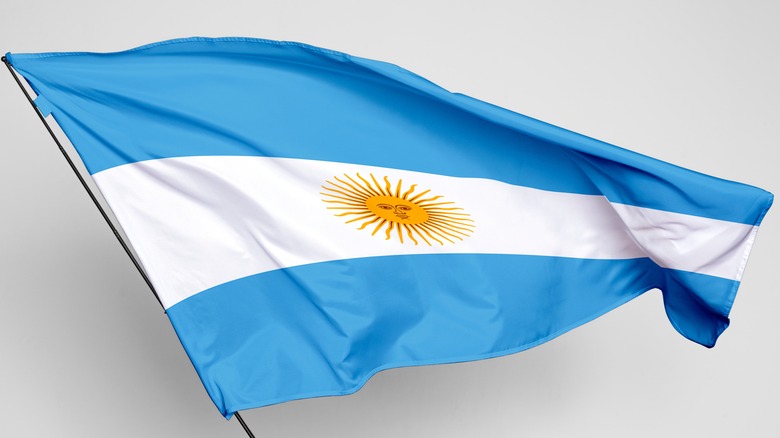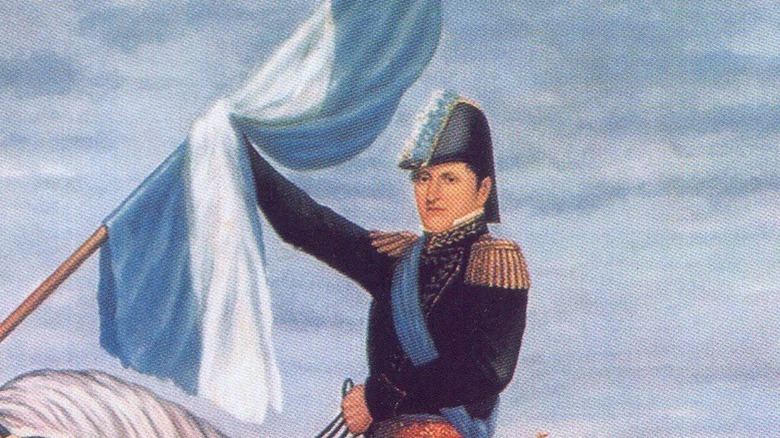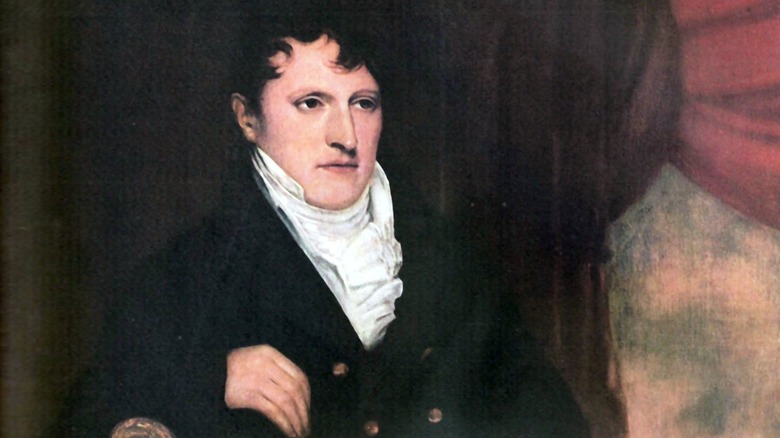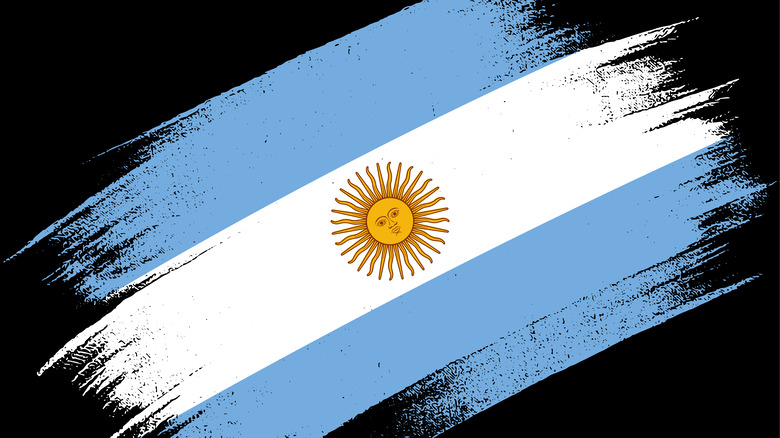The History Of The Argentinian Flag
On December 18, 2022, Argentina won the FIFA World Cup, bringing to three the number of times the South American, soccer-mad nation has brought home the coveted prize. Further, it served as a cap to Lionel Messi's storied soccer career; Messi joins Diego Maradona on the list of Argentine soccer players who dominated at all levels of play, and who helped bring the world championship trophy home.
The Argentines won the tournament wearing their recognizable uniforms, which feature baby blue and white vertical stripes, representing the colors of their flag (in which the stripes are horizontal, not vertical, but never mind that). The country's flag, like that of just about every other country in the world, is rife with historic and cultural symbolism, touching upon the country's escape from colonialism as well as a nod to the indigenous peoples who occupied the region before the arrival of Europeans, per Don Quijote.
The briefest history of Argentina's independence
The United States of America was not the only landmass in the New World to be colonized by a European power and then later win its independence through war. In fact, a good chunk of the countries in the Western Hemisphere became countries in the same way, and Argentina is no exception.
The Spanish first arrived at the landmass in the early 16th century, according to Frommers, setting into motion two centuries of conquest, exploration, and tragically, genocide. By the early 1800s, the colonists had grown fed up with heavy taxation, and in 1810 the country's war of independence began following a battle in Buenos Aires. Argentina officially gained independence from Spain, after years of warfare, in 1816, according to the State Department. What happened next is complicated, but long story short, it wasn't until 1860 that all of the territories in the country were fully united into one country, per Frommers.
A revolutionary war (a successful one in particular) needs a guy to serve as the focal point: the hero. The United States' guy is George Washington; Argentina's is Manuel Belgrano.
Manuel Belgrano
George Washington may have helped secure victory in the Revolutionary War through decisive and risky tactics (such as a midnight crossing of the Delaware River to carry out an attack on drunken enemy mercenaries), and he may be the first president and the "Father of Our Country," but he had nothing (directly) to do with our flag.
Not so for Manuel Belgrano. He is credited with creating both the military decoration that inspired it, as well as the flag itself. Specifically, according to The Culture Trip and Don Quijote, Belgrano created a cockade — a bow or a knot of ribbons worn on a hat, per Britannica — to represent Argentine forces. As Don Quijote reports, his cockade was a baby-blue circle around the outside, a circle of white inside, and a blue dot in the middle. So pleased was Belgrano with his cockade that, days later, he decided to apply it to the nascent country's flag. Soon enough, the Argentines were fighting under the proto version of the country's modern flag: Inspired by his cockade, the flag featured two horizontal blue bars, with a white bar in the middle.
The shining sun came later
Argentina got by for a couple of years with a flag that doesn't have the shining sun in the middle of it that we see today. Per Don Quijote, the Sun of May (Sol de Mayo, as it's called in Spanish), wasn't added until later, according to The Culture Trip. The Argentines have an origin story for the sun's placement on the flag (more on that in a moment), but the symbol itself predates its placement on the Argentine flag by some number of years.
As Don Quijote explains, the sun was considered by the Incas of South America to be a god, the source of all life. Juan de Dios Tupac Amaru himself descended from Incan nobility and designed the representation of the Incan sun god Inti, some time before 1813. By that year, Argentine coins featured that version of the sun; you may have realized that the same sun, albeit with a different number of rays, adorns the flag of neighboring Uruguay as well.
What does it all mean?
So what do the colors and symbol on the Argentine flag mean? It depends on whom you ask. In Argentina, the blue colors on the flag are known as "celestes," according to The Culture Trip, "celeste" being the Spanish word for sky blue, according to Google Translate. The sky would come into play with the addition of the sun a couple of years later, so clearly, the blue stripes represent the blue sky, right? Maybe, maybe not. As Don Quijote reports, the blue may represent the Río de la Plata, or they may be a reference to Spain's House of Bourbon. The white is less ambiguous: It's believed to represent silver.
The sun is less ambiguous still. As Gettysburg Flag Works explains, on May 25, 1810, the first mass demonstrations for Argentine independence took place. It was a cloudy day, but the sun shone through the clouds. The sun had been a part of the country's historical and cultural fabric for a while by that point, so putting it on the flag to represent its quest for independence made perfect sense.




